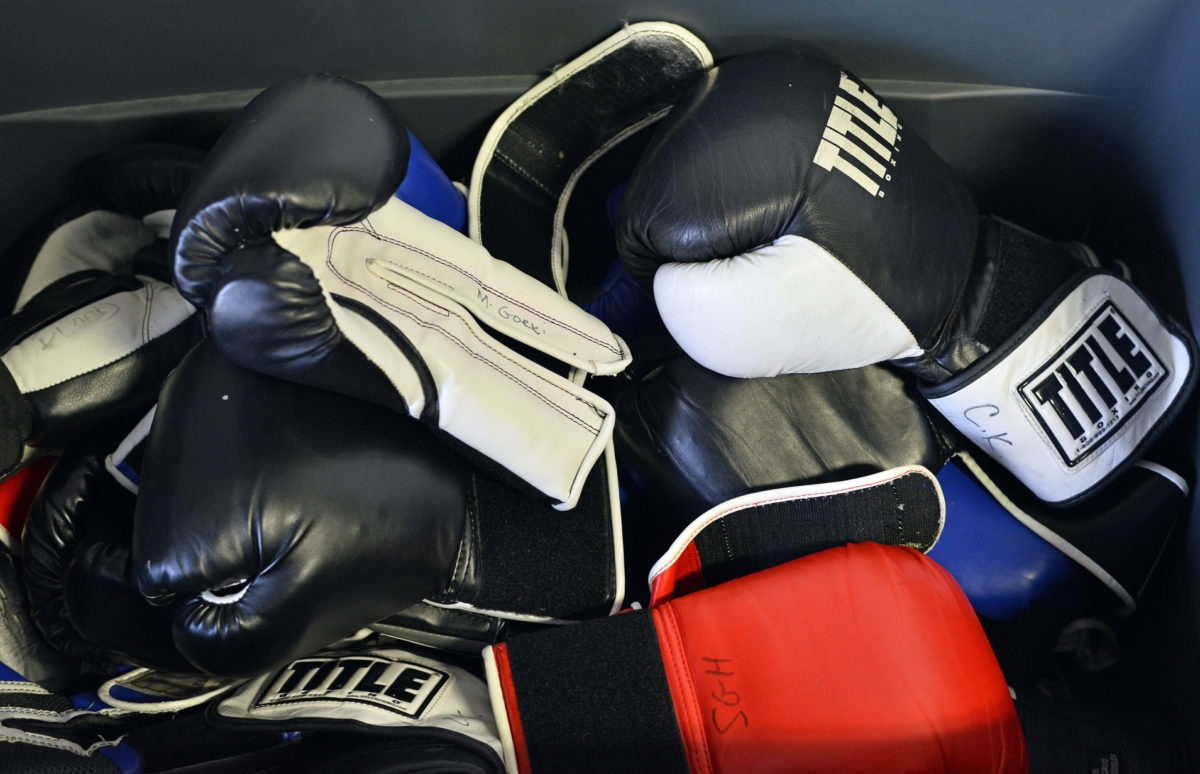When Marcia Hauptman was diagnosed with Parkinson”™s disease at the age of 49, she knew that a number of things in her life were bound to change. But thanks to the efforts of a gym in her hometown of Mount Kisco, giving up her love of exercise is not one of them.
As she laced up her boxing gloves ”“ pink, of course ”“ before a recent class, she gushed about the benefits of the program at Lexington Avenue Gym in the Westchester village.
“It”™s been wonderful,” she said, her eyes lighting up with a smile.

Hauptman, a former aerobics studio owner, is one of more than a dozen members of a class designed specifically for those with Parkinson”™s, a chronic, progressive neurological disease that affects nearly 1 million people in the U.S. The class aims to improve the quality of life of people with the disease through a non-contact boxing-based fitness curriculum.
The program at the gym at 350 Lexington Ave. gym was spearheaded by its owner, Nina Preizler.
“It”™s a workout that any of us would do, but it”™s scaled a little bit depending on what their abilities are and the level of the disease,” Preizler said.
Though the class puts an emphasis on boxing, it”™s not just jabs and punches. During each hour-and-15-minute session, participants are put through drills involving everything from footwork in the ring to wall pushups and ball slams.
“Boxing is the core of it, because it requires the development of agility, coordination, dexterity with both hands and both legs,” said John Wieland, a trainer at Lexington Avenue Gym. “So everything that boxing requires – a lot of trunk development, core development- or everything you develop as you train to be a boxer is very helpful for Parkinson’s.”
Preizler, who was a bilingual Spanish teacher before making a career change and purchasing the gym five years ago, first learned of the positive effects that boxing training could have on Parkinson”™s patients after seeing a segment on CBS Sunday Morning. The video followed 60 Minutes correspondent Leslie Stahl as she attended a similar class in New York City with her husband, writer Aaron Latham, who has Parkinson”™s disease.
“We saw it and we”™re like, ”˜Wow, a boxing gym? This is a boxing gym, this is the perfect place for it,”™” she recalled.
 In April, Preizler, along with trainers Wieland and Percy Thomas, headed to Indianapolis to attend a weekend seminar. The training camp was hosted by Rock Steady Boxing, a nonprofit organization formed in 2006 that teaches people about Parkinson”™s disease and instructs them on conducting their own classes. Training included classroom work, hands-on instruction and an informational session with a doctor.
In April, Preizler, along with trainers Wieland and Percy Thomas, headed to Indianapolis to attend a weekend seminar. The training camp was hosted by Rock Steady Boxing, a nonprofit organization formed in 2006 that teaches people about Parkinson”™s disease and instructs them on conducting their own classes. Training included classroom work, hands-on instruction and an informational session with a doctor.
“We fell in love with the whole idea of it,” Preizler said.
During the intensive two-day camp, Preizler said she went through a variety of emotions.
“I”™m thinking, can I even do this? How am I even going to work this out? But we”™re doing it. It”™s working out really well.”
Participants have discovered the program at Lexington Avenue Gym through online searches, Facebook posts and referrals from physical therapists.
Sarah Todd, manager of outpatient rehabilitation at Northern Westchester Hospital Rehab and Ambulatory Care in Chappaqua, is one such physical therapist who has referred patients to the program.
“Parkinson’s is a disease that tends to make movements stiff, more difficult, slow, and unstable, so boxing counteracts that,” she said.

Because studies have proven that intense exercise can help in the management of Parkinson’s symptoms, Todd said many with the disease look to various forms of exercise, from swimming to cycling, to help improve their balance, tremors, flexibility and coordination.
“In general, exercise is really a big component of keeping them functional,” she said, adding that increased strength and improved stability are just some of the program”™s benefits. “Rock Steady encompasses a lot of those fundamentals of exercise that are in part beneficial to those with Parkinson’s.”
Todd, who has referred five patients to Rock Steady classes, said typically “the more mobile patients do better with it, only because they can handle the demands of the class.”
The physical improvements patients see are not the only benefits the class offers.
“There”™s an element of how someone who has severe impairments views self,” she said, adding that a lack of confidence can sometimes accompany the disease. “And then when they”™re able to do these moves, it is very liberating. It”™s great for their psychological sense of self.”
Reception to the classes at Lexington Avenue Gym has been strong, Preizler said. Since the gym held its first class in May, the program has grown “quite rapidly,” Preizler said. The classes typically see 10 participants and the gym also hosts one-on-one training for five additional clients.
Participants pay a monthly membership fee of $160, which allows them to attend classes twice a week. Personal training sessions start at $55 for a half-hour session. The classes are typically not covered by insurance.
“There”™s a camaraderie of the class,” Wieland said. “They come here, and they see eight, nine, 10 other people dealing with the same thing and that also have a proactive spirit. They want to do something about it. They want to attack it.”
 Wieland said many who are diagnosed with the disease initially give up many activities they enjoy and are prone to both physical and emotional detriments.
Wieland said many who are diagnosed with the disease initially give up many activities they enjoy and are prone to both physical and emotional detriments.
“The class is a nice support system,” Preizler added.
Clients ”“ both men and women ”“ range in age from 50 to 80 and are in various stages of the disease. During the course of a single day, Wieland said he had one-on-one sessions with patients at the opposite end of the spectrum: a recently diagnosed woman whom “nobody would have guessed” had Parkinson”™s to a man who was confined to a wheelchair.
“I don”™t want to make it seem as if I don”™t value what I do when I train other people, but it”™s the most fulfilling work I’ve done as a trainer,” Wieland said. “I became a trainer because I wanted to do more meaningful work, and I definitely believe I”™m doing that, and this is like the next level up. This is really affecting people in a much more profound way.”
Though the program is in its early stages, Weiland said he has already seen marked improvement in the gym”™s clients, from increased strength to a rise in confidence.
“One guy told me that it”™s very hard for Parkinson”™s patients to smile physically, but he told me, ”˜I”™m smiling on the inside right now,”™” Wieland said.





















